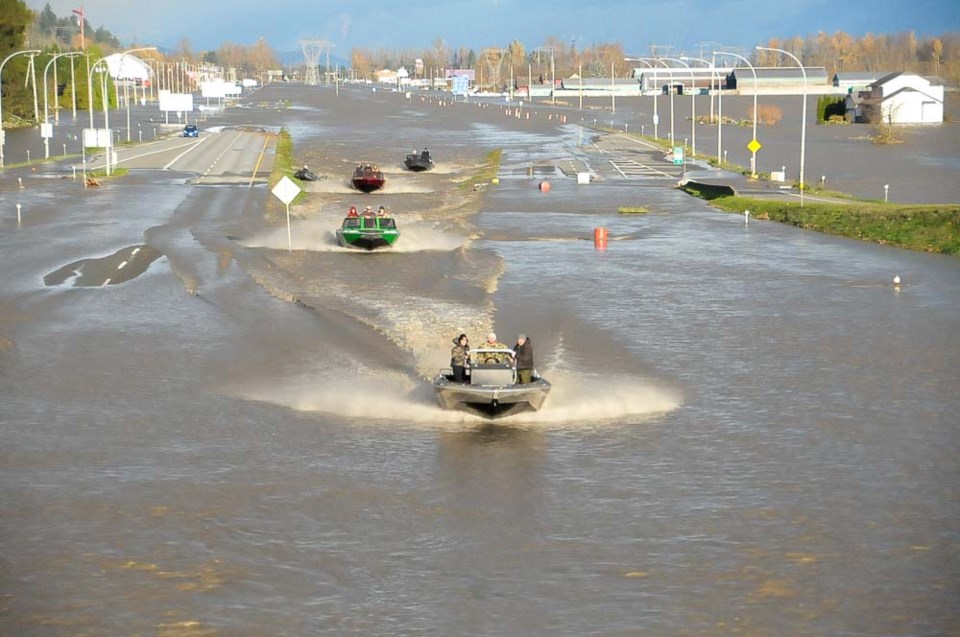It has been more than two weeks since disastrous flooding hit B.C. but the insurance industry still isn’t sure what the final damage will tally up to.
“A lot of people have unfortunately not been able to get into their homes and obviously we haven’t been able to get in to start appraising them for the damage,” said Paul Gilbody, senior vice-president of property and specialty claims at Aviva Canada Inc.
Aaron Sutherland, vice-president of the Insurance Bureau of Canada (IBC), Pacific region, explained that it typically takes the industry about a month after an natural disaster to make a total damage estimate. According to IBC, Canada’s insurance industry has spent an average of $2.1 billion on damage from extreme weather over the past decade. The flooding in Alberta in 2013 resulted in $1.7 billion in insurance claims.
Homeowner claims for flooded basements and damaged personal property aren’t the only ones British Columbia’s insurance industry is having to deal with. Flood insurance has typically been geared more toward businesses than toward personal homeowners.
“I suspect we’re going to see more businesses that have flood insurance than homeowners just given the fact that its much more widely available,” Sutherland said.
However, while businesses are more likely to have flood insurance, they are not insured for business interruption. Many businesses will be able to claim for property damage but it is unlikely that policies cover the loss of customers or supply from province-wide highway disruptions.
Insurance companies will likely end up paying billions of dollars to cover claims from recent floods, only months after having to pay for claims spurred by severe wildfires. With climate change causing an increased number of extreme weather events, there are concerns about insurance premiums rising to offset repair costs. However, Sutherland said, the industry is well capitalized — “No one event is going to lead to a spike in insurance premiums.
“But the trend is what is concerning,” he added.
Not everyone agrees that premiums won’t rise significantly.
Andrey Pavlov, professor of finance at Simon Fraser University’s Beedie School of Business, thinks prices will be forced up as insurance companies are stuck with the bill for the increased damage caused by more frequent severe weather events. Not only will insurance companies need to cover the cost of damage from current flooding, but they’ll also have to prepare for future flooding, causing premiums to rise.
Insurance could become more difficult to get in the future; some people affected by the recent floods already don’t have access to insurance or a way to offset their losses. Five per cent of the province is ineligible for flood insurance including residences in the recently affected area. Because of the devastation, Aviva is offering $2,500 to policyholders affected by the disaster but who were ineligible for flood insurance. However, many are still left with thousands of dollars of unrecoverable losses.
With more flooding expected in the future, the question becomes how to address those who are unable to get flood insurance. Both Sutherland and Gilbody say that relocation of these residents is unlikely and that a solution to current insurance woes is needed.
“We all have to put a real focus on this; this isn’t a one-off and we can all dust ourselves off and carry on as normal,” Gilbody said. “I think this is a real wake-up call to think and act differently.”
In the U.S., the government subsidizes flood insurance for homeowners in areas that are at high risk of flooding, according to Pavlov. However, he cautioned that subsidizing insurance could also have the unintended consequence of encouraging people to move or stay in high-risk areas because risk is not priced appropriately.




